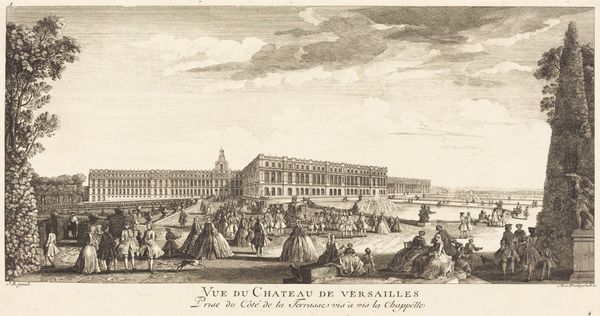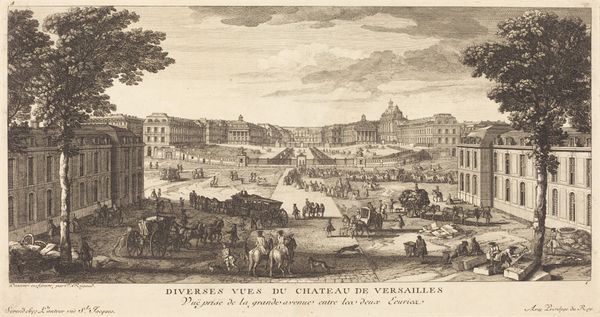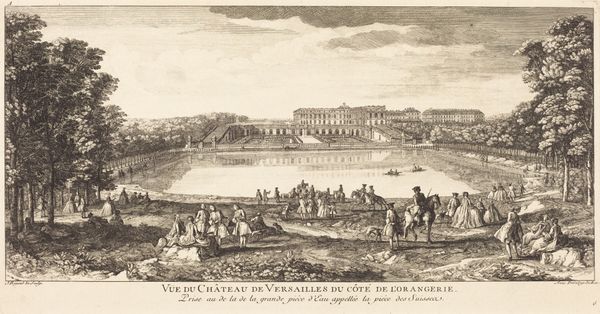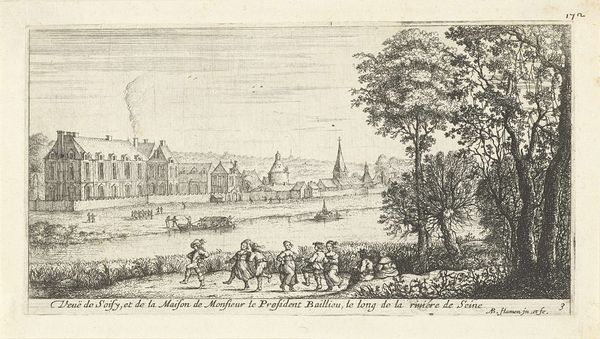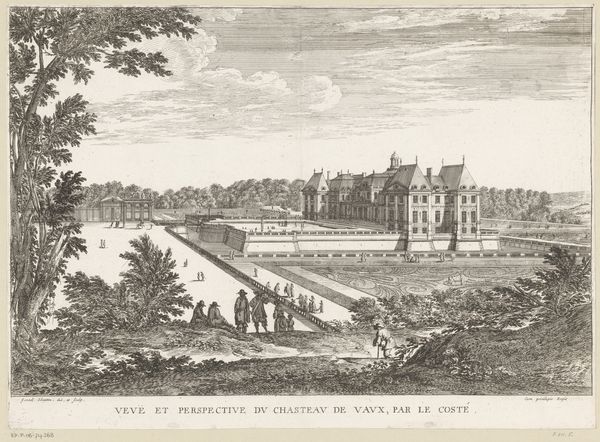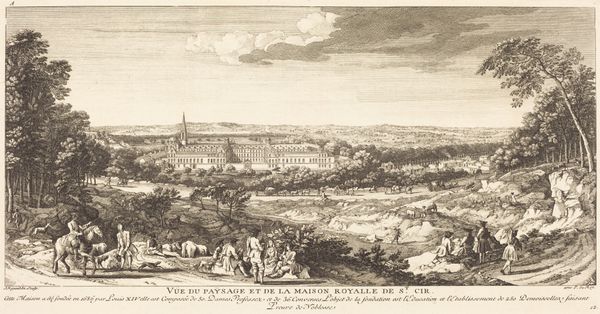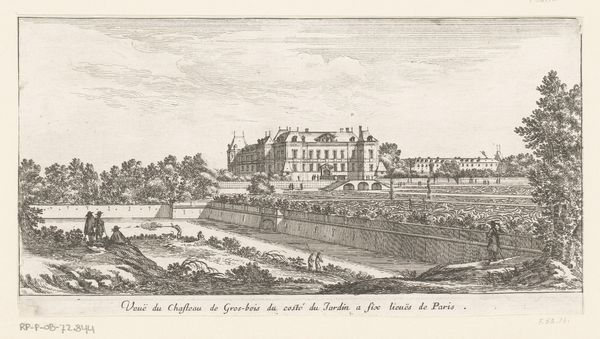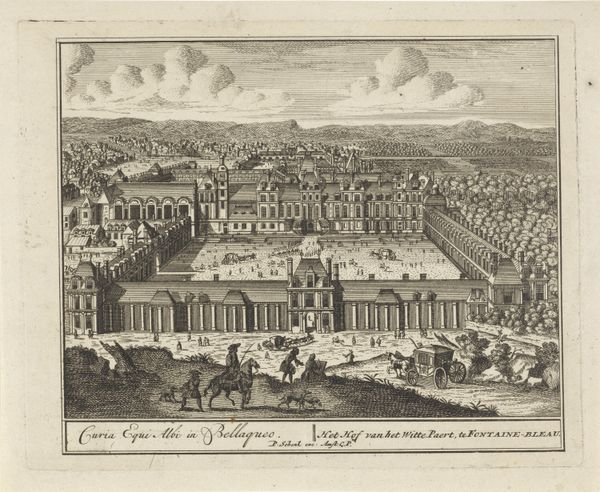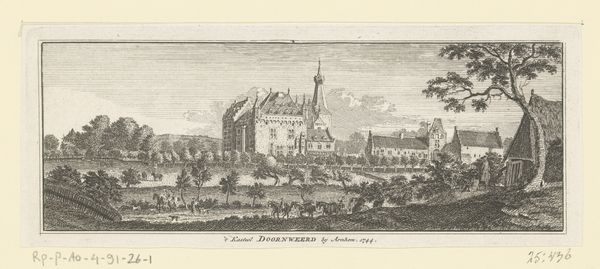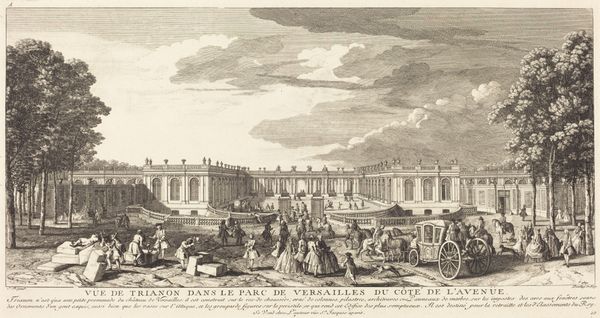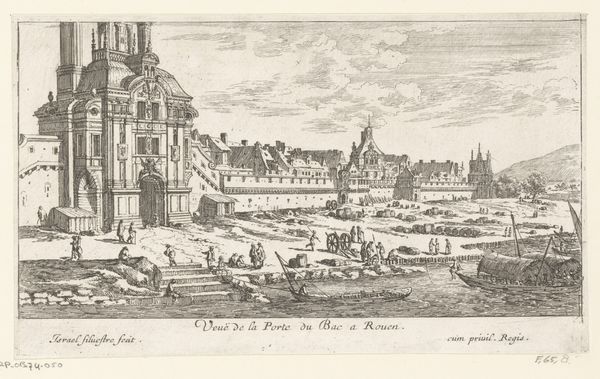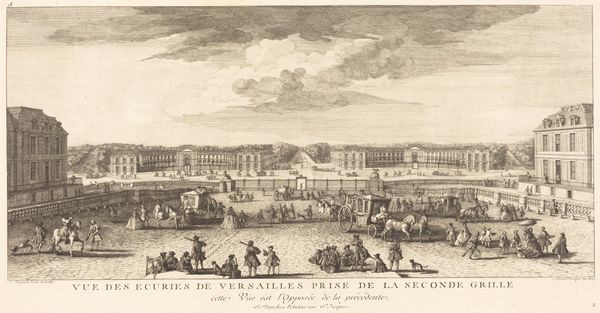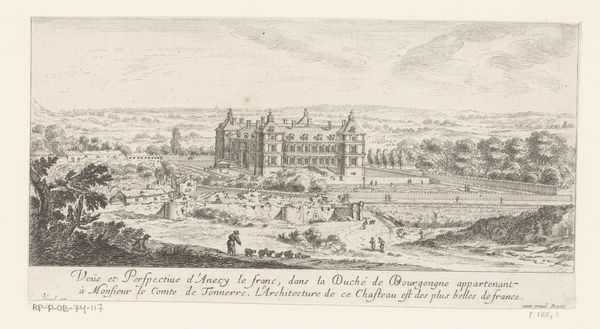
drawing, print, engraving
#
drawing
#
baroque
# print
#
landscape
#
cityscape
#
engraving
Copyright: National Gallery of Art: CC0 1.0
Jean-Baptiste Rigaud made this print of the Palace of Versailles sometime between the late 17th and early 19th centuries. The palace, of course, stands as a monument to the French monarchy's ambition, but also to its uneasy relationship to the aristocracy and the general population. Rigaud’s print shows us how the palace visually dominates the town. From this higher vantage point, the eye sweeps down toward the main event as figures on horseback and hunting dogs populate the foreground. What we might call the social hierarchies of the era are thus made clear through this visual hierarchy. Versailles was built by Louis XIV, who intended it not only as a residence for the royal family, but also as a kind of gilded cage for the aristocracy. Making them dependent on his largesse was part of an explicit strategy to undermine their power, and ensure their subservience. To fully appreciate the image, historians pore over letters, diaries, and official records. This research helps us to understand the intricate web of social, political, and economic factors that shaped the creation and meaning of art in its time.
Comments
No comments
Be the first to comment and join the conversation on the ultimate creative platform.
